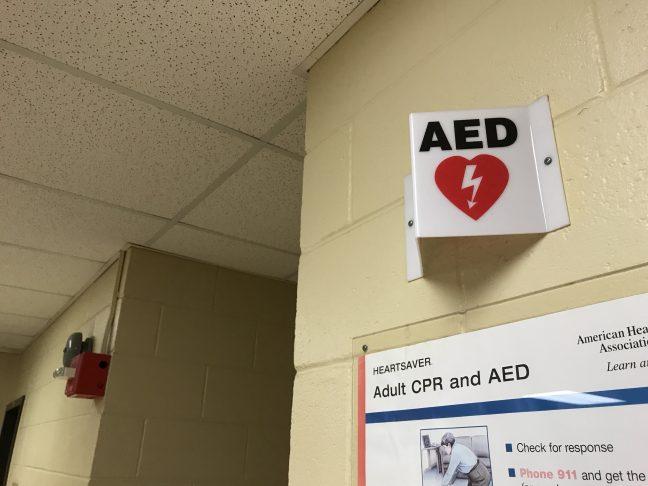The Wisconsin Interscholastic Athletic Association collaborated with the National Federation of High School Associations to receive 24 brand-new AEDs Oct. 17. The AEDs were then distributed to 24 Wisconsin high schools free of charge, WIAA Executive Director Stephanie Hauser said.
The Wisconsin Interscholastic Athletic Association is a non-profit private business that regulates the state’s high school athletic programs for private and public schools. Hauser spoke about the significance of this collaboration with the National Federation of State High School Associations.
“Some high schools do not have many resources and depend largely on fundraising for their budget,” Hauser said. “We hope this [free AEDs] can be additional support for them.”
Screening and prevention is the best way to reduce deaths of athletes due to sudden cardiac arrest, according to the Journal of the American Heart Association. One way of prevention is to be prepared with resources in case of the event of sudden cardiac arrest.
To prevent sudden cardiac arrest, Hauser said, high school athletes part of the WIAA are required to get a sports physical by their doctors.
Athletic director for Notre Dame Academy Matthew Koenig discussed the impact of his school being selected for AED placements. He explained that their athletic facilities are properly prepared with AED and resources. When hosting events with large groups of students, it is important for parents and coaches to be prepared in case something happens.
“Seconds save lives,” Koenig said. “Which is why I am why I wanted to make sure that there was an AED machine available in our school within seconds. I read and see stories of this happening. And I don’t want to be the school that wasn’t prepared.”
Pediatric Cardiologist at UW Health Dr. Derek Hoyme also touched on the importance of AEDs. He explained that AEDs are used to coach CPR in case of a cardiac arrest event by fixing an abnormal heart rate with shock. AED machines also have instructions and voice commanders that give instructions to the person using them.
While uncommon for young athletes, cardiac arrest is something that should always be prepared for, according to Hoyme. Having a procedure for cardiac arrest that is similar to one of a tornado emergency such as delegating tasks is the best way to be prepared to save time in case of an emergency.
“Every minute there is no cardiac input, the life expectancy rate decreases by 10%,” Hoyme said.
In addition to the young athletes in the sports facilities, schools are also worried about spectators and coaches in case of an emergency. Koenig explained that sports games tend to have many more people which is why it is important to be prepared with an AED in case it needs to be used.
“I am looking out for the students, coaches and spectators,” Koenig said.
In case of an emergency, identifying and acting immediately is the most important thing to do, according to Hoyme. Even at a large event, immediately acting and getting help when seeing something wrong in the stands is extremely important.
“I think it is a really important thing to push for and advocate for,” Hoyme said. “Anyone can save a life.”


